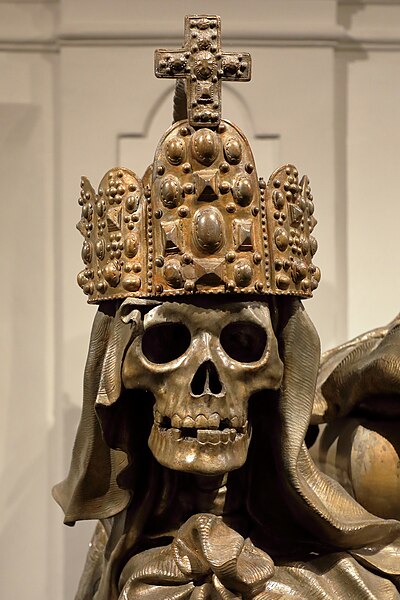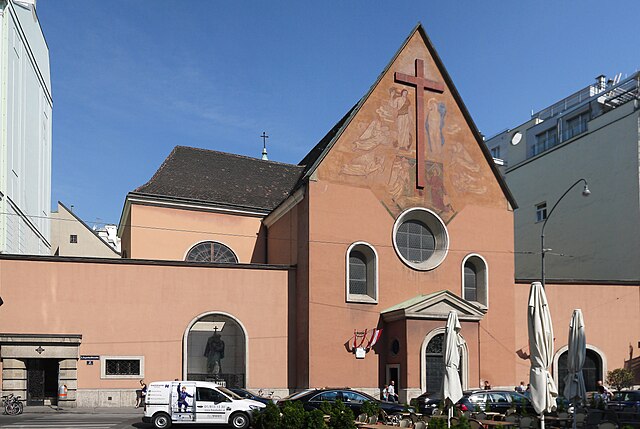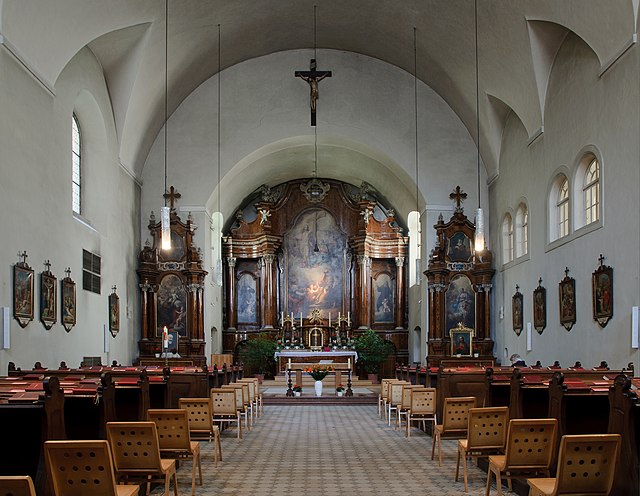The Imperial Crypt, also called the Capuchin Crypt (Kapuzinergruft), is a burial chamber beneath the Capuchin Church and monastery in Vienna, Austria. It was founded in 1618 and dedicated in 1632, and located on the Neuer Markt square of the Innere Stadt, near the Hofburg Palace. Since 1633, the Imperial Crypt serves as the principal place of entombment for the members of the House of Habsburg. The bones of 145 Habsburg royalty, plus urns containing the hearts or cremated remains of four others, are here, including 12 emperors and 18 empresses. The visible 107 metal sarcophagi and five heart urns range in style from puritan plain to exuberant rococo. Some of the dozen resident Capuchin friars continue their customary role as the guardians and caretakers of the crypt, along with their other pastoral work in Vienna. The most recent entombment was in 2023.
The Capuchin Church in Vienna, Austria, which houses the Imperial Crypt
An ornament of the sarcophagus of Emperor Charles VI: a death's head with the Imperial Crown
Plan of the Imperial Crypt A. Founders Vault B. Children's Columbarium C. Leopold Vault D. Charles Vault E. Maria Theresa Vault F. Franz Vault G. Ferdinand Vault H. New Vault I. Franz Joseph Vault J. Crypt Chapel K. Tuscan Vault
Sarcophagus of Emperor Leopold I
The Capuchin Church in Vienna, Austria, is a Catholic church and monastery run by the Order of Friars Minor Capuchin. Located on the Neuer Markt square in the Innere Stadt near the Hofburg Palace, the Capuchin Church is most famous for containing the Imperial Crypt, the final resting place for members of the House of Habsburg. The official name is the Church of Saint Mary of the Angels.
Capuchin Church, Neuer Markt, Vienna, Austria
Capuchin Church interior
Otto von Habsburg lying in repose
An ornament of the sarcophagus of Emperor Charles VI








